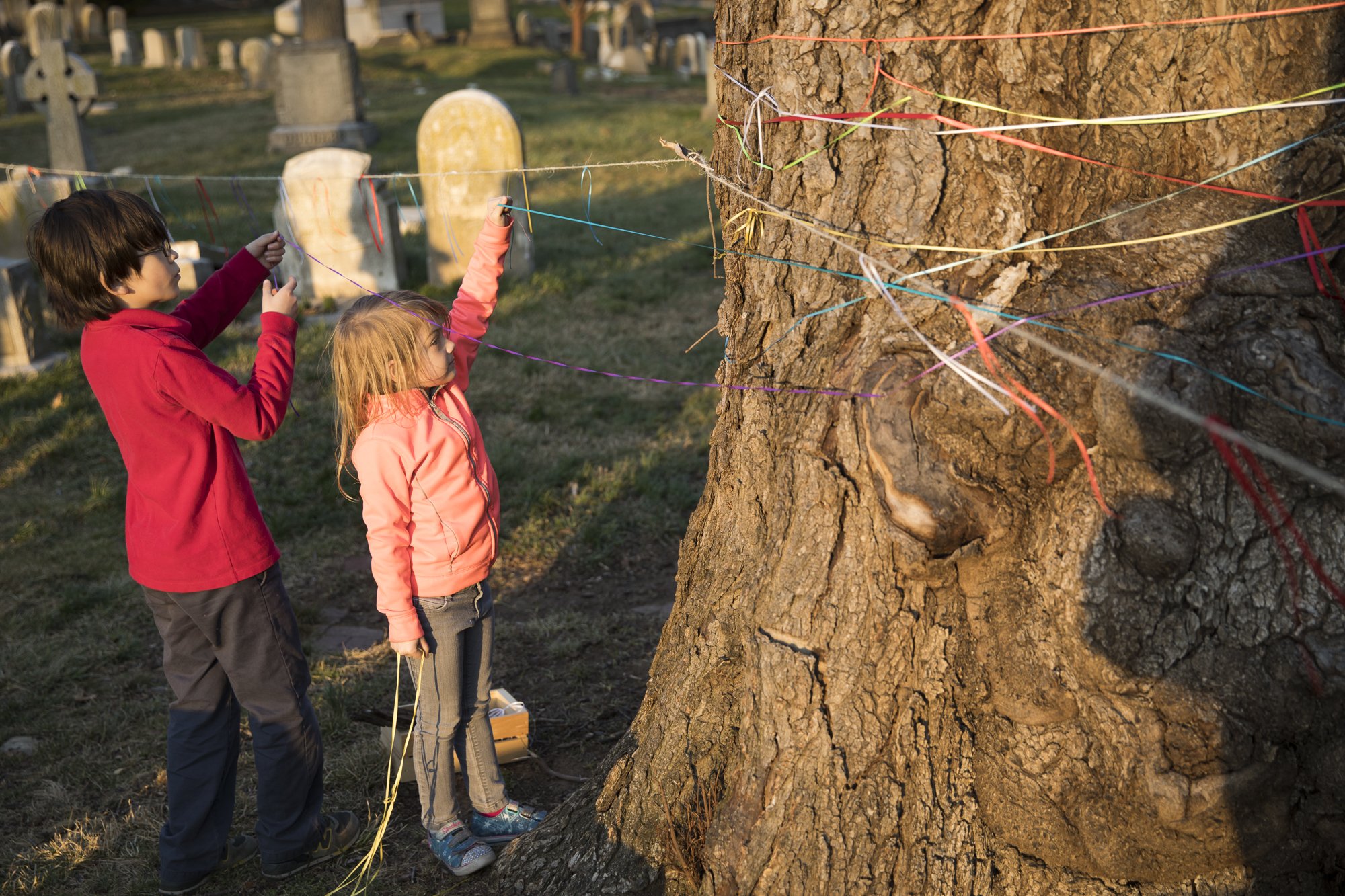Support our oldest living monuments
Your support of The Woodlands Tree Fund helps us grow and nurture our tree and shrub collection. Keeping a tree or shrub healthy for decades (or centuries) takes time, intention, and care, starting with the purchase of high quality trees for planting, to the clean up of unforeseen storm damage, and all stages of life in between.
In a tree’s early days at The Woodlands, we need to provide protection in the form of stakes, ties, fencing and mulch, and of course regular watering and weeding. Watering is a particular challenge here as there are limited spigot locations across our 54 acres.
In spring of 2022, contributions to The Woodlands Tree Fund helped us set up a mobile water tank so that we can water more trees in less time. As a tree progresses into the teen years and beyond they’ll need pruning by a qualified arborist to help their structure grow strong. All along the way we need to keep them tagged and mapped for regular assessment.
Be a part of our growth.
Learn more about the trees at The Woodlands
TREE FINDER
For the first time, the over 1,000 trees living in the 54 acre Woodlands are listed in a public inventory. Trees are searchable by species, common name, inventory tree tag number, and by location.
BLOG POSTS
Want to learn about State Champion Tree care, the oldest Gingko in America, or how William Hamilton transported new specimens to the United States in the 18th Century? Check out our blog!
Pictured on the left: a recent photo of the State Champion Caucasian Zelkova near the Hamilton Mansion. Right: a Caucasian Zelkova in 1920 at The Woodlands.
The History of the Tree Fund
Since the Cemetery’s founding in 1840, the care of The Woodlands’ trees has been central to the upkeep of the site. Eli K. Price, one of the founders of The Woodlands Cemetery Company, and whose family continues its long association with the site to this day, wrote in The Gardener’s Monthly:
“These trees will be cared for and preserved in the Woodlands. What is more important is that they should be secured to our country by propagation. If seeds should appear next Fall, they will be gathered.”
The Woodlands Tree Fund was established with that ethos in mind in an effort to maintain, preserve, and renew the historic landscape.
The Grove of Seven Giants
If you've ever taken a walk through the grounds, you've likely noticed what many consider the most significant clustering of trees on the property. Just to the east of the Hamilton Mansion is a grove of four English elm (Ulmus procera) snags, what remains of the seven trees that once towered over the cemetery monuments beneath them. Fondly called "The Seven Giants,” these elms were perhaps some of the most significant trees on the property, in the city, and in the Philadelphia region.
The English Elm trees at The Woodlands are remnants of William Hamilton's 18th century landscaped estate. Some of the trees likely pre-dated the cemetery founding, and may even have been planted by Hamilton. Tree experts believe that this was the only remaining Elm grove of its kind in this country, a true cathedral for tree people. Three of the trees were State Champion Trees of Pennsylvania.
In late May of 2014, a regular visitor to The Woodlands discovered that several of the elms in this historic grove were exhibiting signs of Dutch elm disease and alerted staff. Testing confirmed the infection, and treatment on the trees started immediately. Friends of The Woodlands and admirers of the Grove of Seven Giants united to support The Woodlands Tree Fund in an attempt to save the trees.
Despite our dedicated efforts, by March of 2017 all seven of the Giants had succumbed to Dutch Elm Disease. We commemorated the Giants with an obituary and a community memorial, and left the elm snags standing as a reminder of the commanding trees that stood for a century.
© 2025 The Woodlands
4000 Woodland Avenue, Philadelphia, PA 19104














